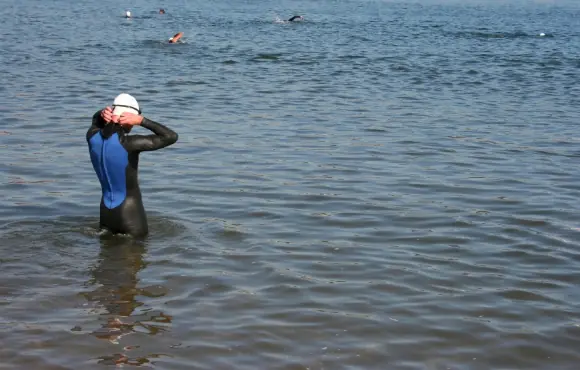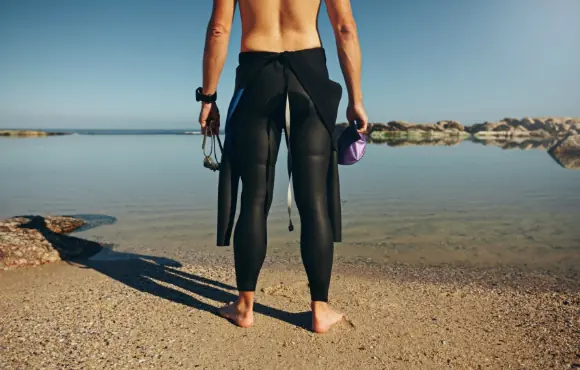1. Water and Air Temps.
1 of 6
Air and water temperatures are not equivalent. A 65-degree day is quite comfortable, but 65-degree water is very cold. We can swim comfortably in temperatures from the mid-70s and above, but temperatures in the 60s are uncomfortable and may not be tolerated for long swims without a wetsuit. The 50s and below are dangerous without proper protection from a wetsuit. Every body is a little different in what they can tolerate, but all bodies can be trained to adapt to the cold.
2. Train in Your Wetsuit.
2 of 6
Training in your wetsuit in the open water is the best way to optimize return on your investment. The more you acclimate to the suit and open water, the greater your comfort and the better your performance. If you can't get to the open water before your race, try it out a couple of times in a pool. This goes against the manufacturer's recommendations, as pool chemicals can compromise the integrity of the rubber, but feeling confident and comfortable in your wetsuit will be worth the very minor impact one or two pool swims will have.
3. Putting on Your Wetsuit.
3 of 6
Putting on your wetsuit before a race or training takes a decent amount of time. If you have any areas that get chafed (neck area) or are extra snug (wrists and ankles), lubricate with a product like Body Glide. Get into it when you are dry because wet skin makes it nearly impossible to put on. Before you zip up, snug it up: Pull all the excess material (on your arms and legs) up and in toward your torso millimeter by millimeter. This will optimize your fit and comfort.
4. Taking Off Your Wetsuit.
4 of 6
As you start to stand up at the end of the swim, quickly scoop water into the neck of your wetsuit. This will make it easier to strip as the water runs through and creates space in the wetsuit. As you stand up, put your goggles on your head, unzip the back and pull down your arms and torso while running toward T1. When you get to your bike, pull off the legs of the wetsuit. If you struggle getting your feet out, consider cutting the legs on your wetsuit. The legs taper toward the ankle, so the leg opening is very narrow. You can cut them as high as mid-calf and still get full buoyancy from your wetsuit. Start with an inch or two at a time.
5. Know the Rules
5 of 6
USA Triathlon's wetsuit policy allows wetsuits to be worn in temperatures up to 78 degrees Fahrenheit with no penalty. If the water temperature is between 78 and 84 degrees, the athlete may wear a wetsuit, but he/she will not be eligible for age-group awards. IRONMAN has similar rules with slightly different temperature guidelines. Check posted conditions before your race day to see if wetsuits are permitted.







Discuss This Article